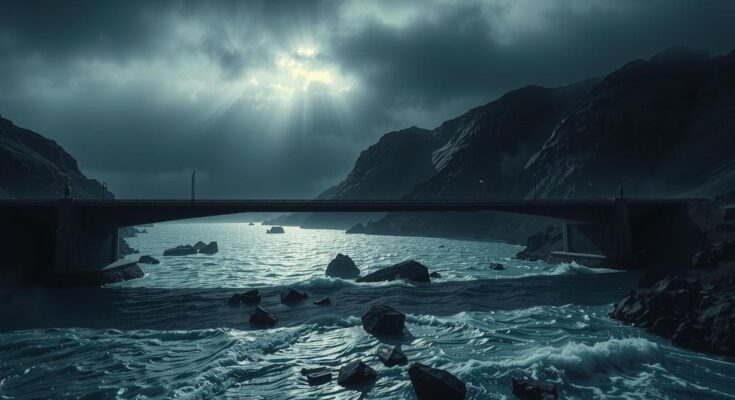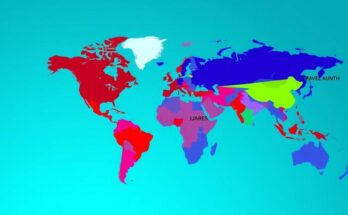Protests in Kinshasa against Rwandan President Kagame highlight allegations of Rwanda backing M23 rebels in Goma. Reports suggest Rwandan military support boosts M23, which has taken control amid ongoing conflict. Kagame’s longstanding denial contrasts with increasing evidence. The M23’s motivations intertwine with historical ethnic tensions and control over lucrative mineral resources, complicating the crisis and prompting regional diplomatic efforts.
Protests have erupted in Kinshasa, the capital of the Democratic Republic of Congo (DR Congo), where demonstrators burn portraits of Rwandan President Paul Kagame and destroy Rwandan flags in reaction to the M23 rebels taking control of Goma. The outcry centers on allegations of Kagame’s support for the M23, claims that have been reiterated by the United Nations for years. A group of UN experts asserts that the Rwandan army exercises de facto control over M23 operations, revealing that M23 recruits receive training under Rwandan oversight and are equipped with advanced Rwandan weaponry.
Situated at the base of a volcano near Lake Kivu, Goma is a critical hub for trade and humanitarian efforts in the mineral-rich North Kivu province, which is home to around two million displaced individuals due to ongoing violence. As conflict reignited recently, explosions divided the streets, which are now littered with bodies, while communications and utilities were cut off. It is reported that the M23 has taken most, if not all, of the city.
UN peacekeeping chief Jean-Pierre Lacroix has confirmed the presence of Rwandan troops in Goma supporting the M23, though exact troop numbers are hard to discern. Congolese soldiers have surrendered by crossing the border into Rwanda. In contrast, President Kagame has consistently denied aiding the M23. However, Richard Moncrief from the International Crisis Group mentions a significant shift toward justifying Rwanda’s defensive actions due to mounting evidence of its support for the M23.
Rwanda’s foreign ministry asserts that the fighting close to its border poses a serious threat to its security, dismissing various statements about the conflict as misguided or manipulative. Kagame’s historical perspective is rooted in the 1994 Rwandan genocide, as he perceives the Hutu militia, which fled to DR Congo and formed rebel groups, as a continual existential threat.
The M23 has leveraged these tensions to justify its existence, claiming to represent the interests of the Tutsi minority in DR Congo. The group initially disarmed more than a decade ago but re-emerged in 2021 to reclaim territory, attributing its resurgence to unfulfilled peace agreements. Two regional forces, deployed with the intention of addressing the M23 issue, have struggled to contain the violence.
Experts report that M23 training sessions are conducted in Rwandan territory, where recruits, including minors, undergo extensive military training. The M23’s military strength has been bolstered by Rwandan support, with estimates suggesting that 3,000 to 4,000 Rwandan troops are active in DR Congo, equipped with advanced weaponry. Captured M23 fighters refer to Rwandan soldiers as the “Friendly Force,” underscoring their intimate connection with the rebel group.
Rwanda’s ally, Uganda, has also faced accusations of supporting the M23, with allegations of weapons provision and cross-border movements of combatants. President Kagame’s growing frustration with DR Congo’s handling of Hutu rebel factions has likely fueled the resurgence of M23. Experts indicate that the M23’s capture of strategic locations, like Rubaya, has been economically motivated, allowing it to control lucrative mineral trade routes.
Notably, the UN has documented advanced weaponry being deployed by the M23, which distinguishes it from other armed groups in eastern DR Congo. The M23 has been observed utilizing sophisticated technology to hinder Congolese military operations, enhancing its tactical advantage. Kagame has dismissed the credibility of UN reports, criticizing them for failing to address other significant atrocities occurring in DR Congo.
Currently, the East African Community is mediating in the crisis, yet Tshisekedi has opted out of a hastily organized summit. Observers note that Kagame will likely focus discussions heavily on the FDLR, reflecting his view of their ongoing presence as a fundamental issue affecting regional stability.
The Democratic Republic of Congo has been embroiled in conflict, primarily driven by historical ethnic tensions linked to the 1994 Rwandan genocide. The ongoing violence threatens the stability of the region, particularly in the eastern provinces, which are rich in mineral resources. The M23 rebel group, tracing its origins back to these ethnic disputes, aims to protect the interests of the Tutsi minority. Regional dynamics are complex, influenced by the involvement of neighboring countries like Rwanda and Uganda, each with vested interests in the outcomes of the conflict.
The M23 conflict in DR Congo illustrates a multifaceted crisis with international implications. Allegations surrounding Rwandan support for the rebels raise significant concern, fostering resentment within Congolese society. With the strategic importance of controlled areas like Goma and Rubaya for mineral resources, the situation remains precarious. Diplomatic efforts by regional bodies like the East African Community may be essential in addressing these tensions and promoting stability in the region.
Original Source: www.bbc.com




